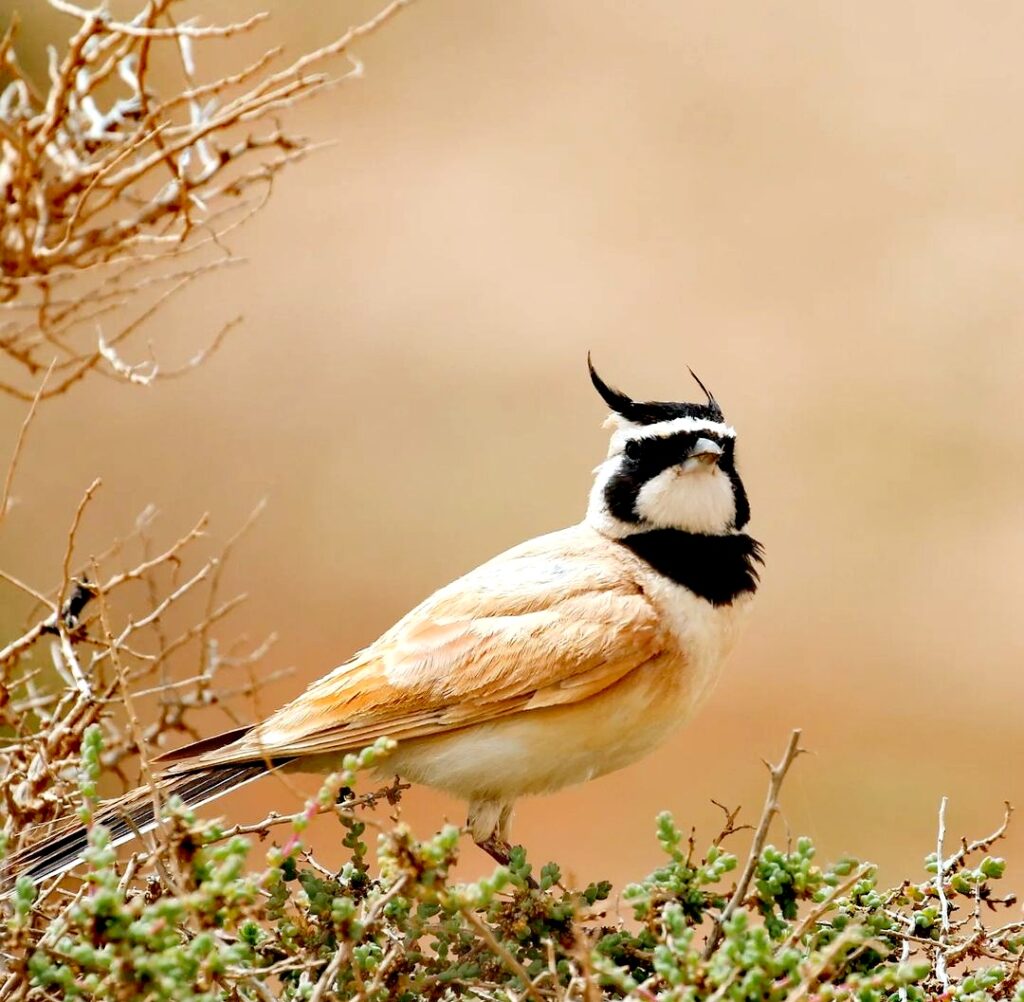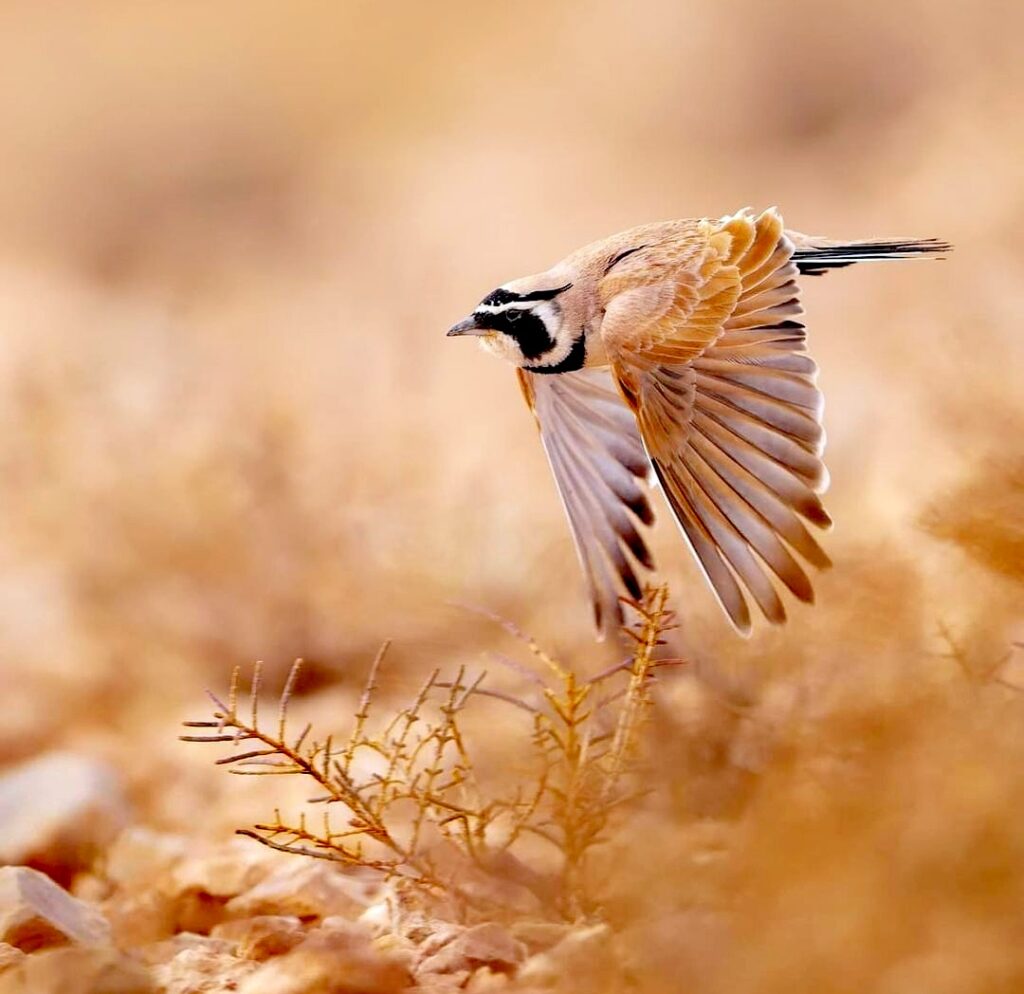TEMMINCKS LARK
Temminck’s Lark , also known as Temminck’s Horned Lark, is a small lark species that can indeed be found in Morocco.
Appearance: Temminck’s Lark is a relatively small lark with cryptic plumage that provides excellent camouflage against its arid habitat. It has a sandy brown back with darker streaks and markings, while the underparts are paler with fine streaking. One of its most distinctive features is the pair of small “horns” or feather tufts that protrude from the sides of its head. These tufts are often raised when the bird is alarmed or during courtship displays.
Habitat: In Morocco, Temminck’s Lark inhabits arid and semi-arid habitats, including sandy deserts, dry grasslands, and rocky plains. It prefers areas with sparse vegetation and open terrain, where it can forage for food and build its nest. It is particularly associated with sandy or gravelly soils.
Diet: Temminck’s Lark is primarily insectivorous, feeding on a variety of insects and other invertebrates found in its habitat. It forages on the ground, using its bill to probe and pick at the soil in search of prey. It may also consume seeds and plant matter opportunistically, especially during the non-breeding season when insect prey may be scarce.
Behavior: Temminck’s Lark is often seen running or hopping across the ground, using its strong legs to move swiftly over sandy or rocky terrain. It is well-adapted to its arid environment and can tolerate high temperatures and limited water sources. It is generally solitary or found in small groups outside of the breeding season.
Breeding: Breeding typically occurs during the spring and summer months, with pairs establishing territories and building nests on the ground. The female lays a clutch of eggs, usually numbering between two to four, in a shallow scrape lined with plant material. Both parents share the responsibility of incubating the eggs and caring for the young.
Conservation: Temminck’s Lark is not considered globally threatened, but like many bird species, it may face threats such as habitat loss and degradation due to human activities, including agriculture, urbanization, and infrastructure development. Conservation efforts focused on habitat protection, sustainable land management, and monitoring populations are essential for ensuring the continued presence of this charismatic bird in Morocco and beyond.


